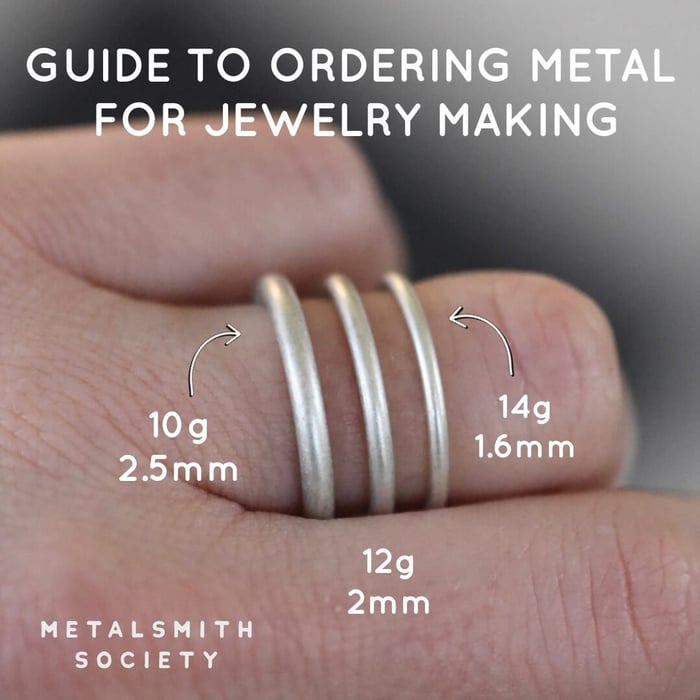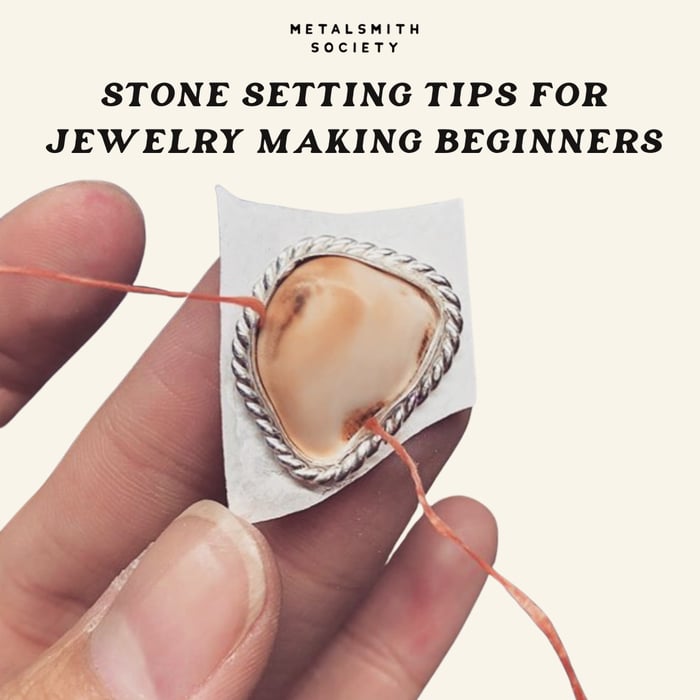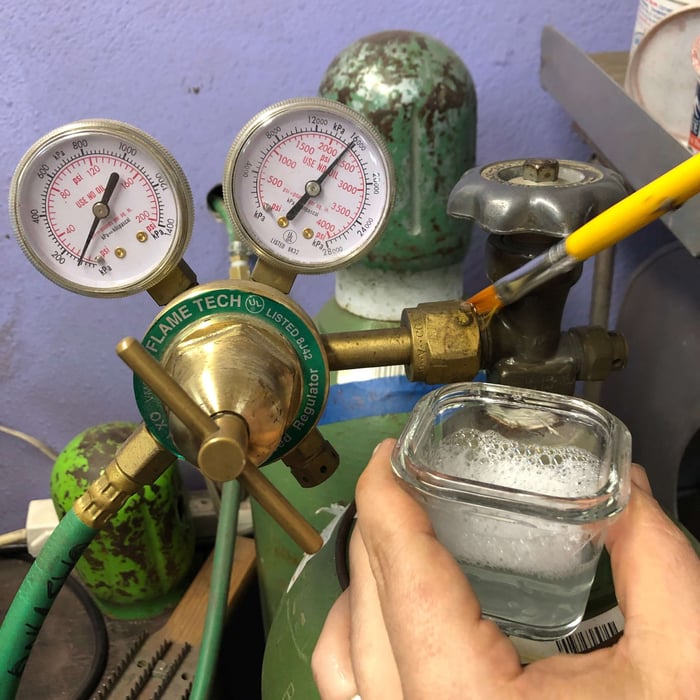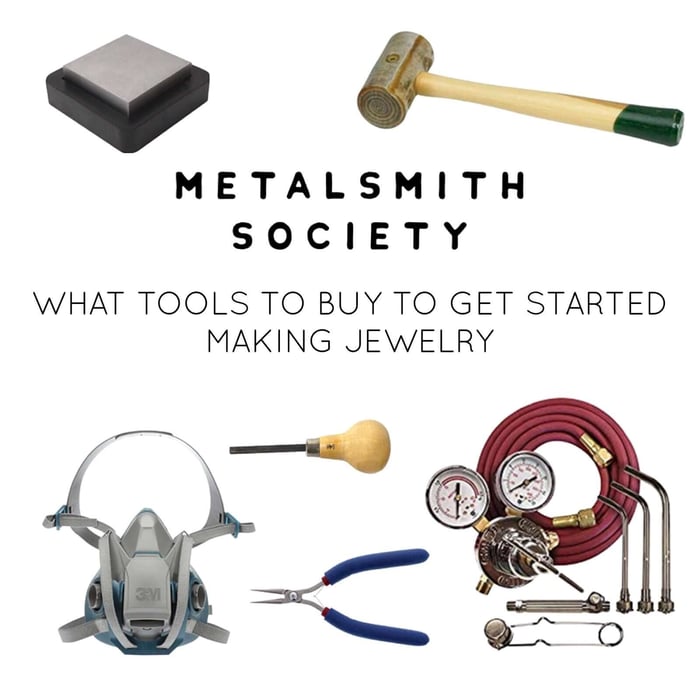When it comes to ordering silver sheet and wire for jewelry making, as a beginner all the different options can often become overwhelming. When you are starting out creating jewelry you don’t want to break the bank buying a bunch of materials you may never utilize! You want to have the ability to be thoughtful about your design, considering which thickness of metal will be appropriate for executing your vision and also strong enough to hold up during daily wear.
In this comprehensive guide, I will provide visuals to help demystify the different options so that the next time you purchase materials for a project you can do so in confidence! Whether you're a seasoned artisan or a budding jeweler, understanding the nuances of the different options is crucial for bringing your designs to life.
WHAT METAL ARE WE USING?
Before we talk about anything we must discuss the different options for purchasing silver. The most common is sterling silver (.925) which has 7.5% copper giving the sterling durability and strength but increasing its susceptibility to firescale and tarnish. The other main option is fine silver (.999) It’s significantly softer than sterling, has a whiter appearance and is way less prone to tarnishing as it is almost entirely pure silver. Fine silver can be fused.
My perspective for beginners is that fine will generally be too soft for ring bands and structural parts of your jewelry designs, it can dent and bend. It can however be nice for a bezel wire.Then there is Argentium Silver which comes in two grades .940 and .960. It has increased tarnish resistance, a whiter color and a firestain-free surface. Argentium guarantees traceability of its raw silver, it is certified to be produced using only recycled silver. It can also be fused unlike sterling silver. Sounds amazing, but I confess I have very little personal experience with it, it wasn’t very popular when I came onto the jewelry making scene in 2005. There are some differences between working with Argentium and Sterling so if you choose this path be sure to read up on it!
Most jewelers especially beginners will likely learn with Sterling, it is the most affordable and the durability aspect is very important!
WHAT THE HECK IS A GAUGE ANYHOW?
When you go to buy a sheet of silver you are going to have to select a “gauge”. This is the common measurement used here in United States. Gauge is a standardized measurement, the lower the gauge number the thicker the metal is and that is where much of the confusion begins! It is also important to understand the corresponding measurements in millimeters which I will also provide.

WHICH GAUGE SHEET TO BUY?
Sheet metal is going to be one of your most commonly used forms of silver when making jewelry. Sheet is available for purchase from jewelry supply companies here in the United States from 8g (3.2mm) to 34g (0.2mm) so that is quite the range! In this article I’m going to focus on sterling silver (.925) when making my recommendations.
To answer the above question I have to start with the annoying response “it depends”. Without knowing what you are designing I can’t provide an exact answer but I can explain a good place to start as a beginner and why.Generally speaking if your plan is to have sheet on hand to use as the baseplate of bezel settings and pendants or perhaps sheet for earrings…you cannot go wrong with purchasing 18g (1mm) it is thick enough to be stamped, light enough to construct earrings and strong enough to back a bezel without warping. While on the thinner side it could also be used to create a ring band making it a very versatile purchase. If it is within your budget I would also recommend some 20g (.81mm) and some 16g (1.2mm) having these slightly thinner and thicker options will give you more versatility as you continue on making jewelry. My preference with my jewelry business (corkieboltonjewelry.com) is to make jewelry that is on the thicker side, not heavy or chunky but just substantial.
WHAT DOES “DEAD SOFT” AND “HARD” MEAN?!?
On top of selecting the metal type (sterling or fine) and the gauge you will also have the options for different tempers. Temper refers to the hardness of the metal. The options are: dead soft (annealed), ¼ hard (a bit resistant to bending but readily takes shape) , ½ hard (has been worked a bit, tightening the grain at the molecular level. You can still bend the metal a bit, with force), and spring hard (thoroughly hardened and has basically no malleability.) If you will be soldering on the piece you’re making, you may as well start with dead soft because it’s easy to work with and any hardness the metal may have will be lost when you apply heat to solder. Here is an example of when to order a harder sheet: Let’s say all I’m doing is sawing out a design and cold connecting it, a harder option gives strength to my piece, and that strength will be maintained since I’m not soldering.
So with those options in mind, here are a few questions you can ask yourself when designing your project and selecting the sheet: Is the project I’m making going to get a lot of wear and tear (like a ring or a bracelet?) If the answer is yes, sterling is your best choice (since fine silver is softer). Next you need to choose a gauge heavy enough to experience the wear and tear but light enough to be comfortably. Heavy earrings for example can be uncomfortable and a while delicate ring can be cute it can also get squished. Maybe you are making a bunch of bezels and using simple backplates 20g (.81mm) would likely save you a little money but still be strong enough!
When it comes to ordering metal for jewelry making all the different options can often become overwhelming. There are so many varieties of sheet metals, wires and decorative metals. So I partnered with Rio Grande to provide a guide with some helpful tips and considerations for confidently buying materials for your next project!
PURCHASING ROUND WIRE
Wire is going to be your next most commonly used form of silver in jewelry making and thankfully it is not as much of an investment to purchase different gauges because you can buy a single foot of wire pretty inexpensively. Wire can be commonly found in even more gauges 0 (8.26mm) - 32 (.2mm). Wire is used in so many different ways you will want to consider once again: what kind of project am I making? Where on the body will it be worn? If we use the image of rings as an example we can see that the 10g (2.5mm) wire will provide us with more strength than the 14g (1.6mm). It is probably that a 14g ring like this in sterling silver would become mishappen in no time at all, but it could make a beautiful hoop earring! So choosing the gauge wire you will need for a project definitely depends on the amount of wear and tear (for example bangles and rings gets more wear and tear than earrings and pendants).

For earring posts and French wires I have found that 20g (0.80mm) is good for most customers. The hardness of the wire you choose is once again all about application, if you are soldering the wire it becomes annealed, but if you are making an earring wire which will simply be formed and cold connected, you could in this case benefit from working with half-hard or hard since it will maintain that hardness and give the earring wire strength! You can also use hard wire for wrapping wire or creating rivets.
WHAT ABOUT HALF ROUND WIRE?
I wanted to include an image of half round wire as well because it is extremely popular, and if you order it based off of what you know about round wire you might end up with wire a bit thinner than you expected! Half-round has a flat side and a round sound making it a great option for ring bands and cuffs! The gauge is determined by the thickest part of the wire, but because it doesn't have this thickness throughout it is a daintier wire! So personally I would purchase 8g or thicker for a ring and I'd experiement with gauges 0-4 for cuffs! You want those to be sturdy!

PURCHASING BEZEL WIRE
One of the most common questions is: what gauge bezel wire should I purchase? It typically comes in gauges 24 (.51mm) - 30 (.25mm) and in various heights. First, let’s focus on gauge. If you are newer to bezel setting, consider 28g-30g because it’s easier to push over, especially if you’re doing it all by hand using a bezel rocker tool and a burnisher. You might even consider a fine silver bezel because it will push over more easily. If you’re hammer setting, either with a hammer hand piece or manually, you can use a thicker gauge bezel wire.
Next, consider the stone you plan to set and look up the stone’s hardness (MOH scale). If the stone is delicate you should set by hand (as opposed to hammer) and therefore can use a thinner gauge (28-30g). Softer stones can be set with thicker bezels but this takes some practice, when I was starting out I accidently hammered many an opal!
Regarding bezel height, take the shape and height of your cabochon into consideration. Order a few heights of bezel wire so you have options, if it’s too tall you can always trim it down or sand it. If you like to use a variety of cabochons in your work you’ll find having a variety of bezel wire on hand very helpful. In my book I dedicated an entire section to choosing the right bezel height and other bezel setting tips!
WHAT ABOUT DECORATIVE WIRES?
There are tons of gallery wires, decorative bezels and patterned wire options available to purchase. With the knowledge you now how you can look at the listing and see how thick these items are, how tall they are if you are using them to set a stone. Whether they are a good choice for your design. Sometimes the heart wants what the heart wants, you are drawn to a wire and you buy it and figure out a design later and that’s okay!
Gallery wires should be annealed (carefully) prior to forming due to how they are produced they can be a bit brittle when you form them, same is true of some of the beaded wires! You want to form all of these gently and be careful not to mar your metal! I know melting is definitely an issue many beginners experience so when you work with decorative wires be gently with your heat. Directing your flame from below instead of putting the flame directly onto the decorative wire can help prevent melting.
WHERE CAN I PURCHASE SHEET METALS AND WIRES FOR JEWELRY MAKING?
You can find jewelry making materials form the following retailers:

If you are interested in learning more definitely check out my book Metalsmith Society’s Guide To Jewelry Making. It covers all the tools you need to get started making jewelry, safety, all the basic techniques and includes ten simple projects to get you going! I have a shopping list for each project so if you are lookinh for a basic project to get started grab a copy of my book today!
If you haven't already join our community @metalsmithsociety!
If you found this article helpful, be sure to share it on Pinterest!
You can also support the page by making a small monthly donation on Patreon. Your support means the world to me!








